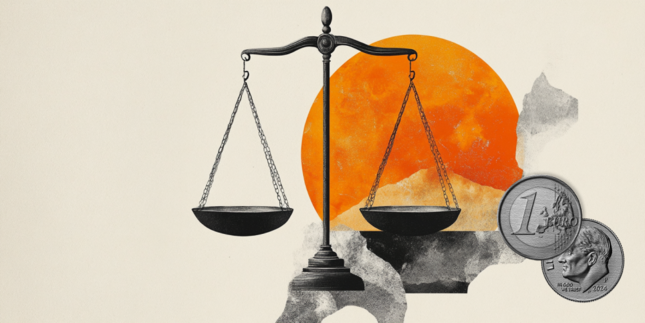- Global stock markets are crashing, and trading at Wall Street has been temporarily halted.
- The crash is correlated to coronavirus, but this specific one has more characteristics.
- All five factors will likely continue weighing on markets for some time.
Long gone are the days of low volatility – it is so high that trading has been halted on Wall Street. The rare move was triggered after stocks fell by 7% at the open. Markets had already declined in the past two weeks and have also seen the occasional upside days last week.
Five factors are making it different this time.
1) High uncertainty causes a mentality change
Why is the death rate low in South Korea and high in Italy? Are there different strains of the Covid-19? Can we trust Chinese figures? Is this just the flu or much worse? These questions – which were prevalent from the outset – continue puzzling the public.
Moreover, trying to forecast the trajectory of the global economy becomes harder as events develop at a break-neck speed. Analysts dismissed a US recession, and now there are growing individual voices. However, some see only a temporary shock followed by a V-shaped recovery.
"When in doubt, stay out" is probably the mentality of many investors, small and large alike. The "buy the dip" approach has disappeared, and it will take time to return to that. It is hard to detect the bottom in the sell-off.
2) Italy is worrying, and it is not alone
The Italian government locked down 16 million people, including Milan, its second city. The drastic measures – which include the industrial heartland – are causing chaos. The outbreak of Covid-19 in Italy triggered the initial sell-off in late February.
Previously, the eurozone's third-largest economy shut down schools and universities. Spain followed through by calling off studies in Vitoria, the regional capital of the Basque country.
Parents who are trying to work at home may find it hard when their kids are around – and working from home is not an option available to everybody.
Will other countries follow? France banned events with over 1,000 people, and other countries may consider similar steps as the disease spreads across the old continent. That may further weigh on the global economy.
3) Slow US response
The world's largest economy has had issues with testing kits for coronavirus and is catching up only now. It has also refrained from transport limits, and most large events continue as planned.
Moreover, President Donald Trump has been dismissing the damage from the disease and offering only limited measures such as providing paid sick leave. His desire not to see a cruise ship dock in an American port to keep the numbers low has not inspired confidence, nor has his delegation of the crisis to Vice President Mike Pence.
Many suspect that once testing is ramped up, the number of infections and the economic fallout would surge. Additional cases in New York City may trigger the shutdown of the subway, paralyzing the city. And that is only one example.
4) The inability of central banks to act
The Federal Reserve's emergency rate cut had a limited positive effect and only opened markets' thirst for more moves. Bond markets see US rates falling to zero by the summer. The Fed is one of the only central banks that has ammunition – it entered the crisis with an interest rate of 1.75%.
The Bank of England's borrowing costs are only 0.75%, the European Central Bank's deposit rate is -0.50%. And in Japan, the interest rate is negative at -0.10 as well.
Moreover, interest rate cuts are useless as they encourage spending, but they cannot convince people to buy flight tickets, go out to restaurants, and drive cars. Moreover, factory shutdowns cause a supply shock, and lower rates only address demand.
While the Fed can continue cutting rates, there is little hope that prevents a further fall as cutting rates modestly help the economy. Once that tool is exhausted, despair could send stocks even lower.
5) Exacerbated by oil
The prospects of people staying indoors and refraining from travel weighed heavily on oil prices. Saudi Arabia and Russia, which were cooperating to cap production and keep prices higher, have fallen out on Friday. The Saudis took the extra step in launching an all-out price war with Russia, lowering its rates for the black gold and ramping out production.
The move has sent oil prices tumbling down, and it could yet have greater damage. Shales produces in the US have higher breakeven prices and may be forced to shut down their operations. While a drop in US oil rigs will eventually push petrol prices higher, it could weigh on the economy and put pressure on manufacturing.
Conclusion
The coronavirus crash is based on developments that are here to stay and may continue weighing on stocks. Finding a bottom may take time.
More Stocks in panic mode – Nearing a bear market as S&P500 retraces to 23.6% Fib of the 11-year bull ride
Information on these pages contains forward-looking statements that involve risks and uncertainties. Markets and instruments profiled on this page are for informational purposes only and should not in any way come across as a recommendation to buy or sell in these assets. You should do your own thorough research before making any investment decisions. FXStreet does not in any way guarantee that this information is free from mistakes, errors, or material misstatements. It also does not guarantee that this information is of a timely nature. Investing in Open Markets involves a great deal of risk, including the loss of all or a portion of your investment, as well as emotional distress. All risks, losses and costs associated with investing, including total loss of principal, are your responsibility. The views and opinions expressed in this article are those of the authors and do not necessarily reflect the official policy or position of FXStreet nor its advertisers. The author will not be held responsible for information that is found at the end of links posted on this page.
If not otherwise explicitly mentioned in the body of the article, at the time of writing, the author has no position in any stock mentioned in this article and no business relationship with any company mentioned. The author has not received compensation for writing this article, other than from FXStreet.
FXStreet and the author do not provide personalized recommendations. The author makes no representations as to the accuracy, completeness, or suitability of this information. FXStreet and the author will not be liable for any errors, omissions or any losses, injuries or damages arising from this information and its display or use. Errors and omissions excepted.
The author and FXStreet are not registered investment advisors and nothing in this article is intended to be investment advice.
Recommended Content
Editors’ Picks

EUR/USD holds near 1.1350 as markets gear up for this week's big events
EUR/USD keeps its range play intact at around 1.1350 at the beginning of the week. The cautious market mood and easing US Dollar demand help the pair hold its ground as investors gear up for this week's upcoming key macroeconomic data releases.

GBP/USD recaptures 1.3300 as US Dollar buying stalls
GBP/USD stays in positive territory above 1.3300 on Monday. A pause in the US Dollar's advance amid a lack of fresh developments hinting at a further de-escalation of the US-China trade conflict support the pair ahead of this week's critical data releases.

Gold rebounds toward $3,300 following bearish opening
Gold recovers to the $3,300 area after starting the week on a bearish note. Mixed headlines on the ongoing US-China trade war cause markets to remain risk-averse at the beginning of the week, allowing XAU/USD to limit its losses.

Monero Price Forecast: XMR soars over 50% amid rising demand for privacy coins
Monero (XMR) price is extending its gains by 50% at the time of writing on Monday, following a 9.33% rally the previous week. The main reason for XMR’s rally is speculation that the token, which is widely known for its status as a privacy coin, was used to launder a suspected theft involving 3,520 BTC worth $330.7 million.

Week ahead: US GDP, inflation and jobs in focus amid tariff mess – BoJ meets
Barrage of US data to shed light on US economy as tariff war heats up. GDP, PCE inflation and nonfarm payrolls reports to headline the week. Bank of Japan to hold rates but may downgrade growth outlook. Eurozone and Australian CPI also on the agenda, Canadians go to the polls.

The Best brokers to trade EUR/USD
SPONSORED Discover the top brokers for trading EUR/USD in 2025. Our list features brokers with competitive spreads, fast execution, and powerful platforms. Whether you're a beginner or an expert, find the right partner to navigate the dynamic Forex market.